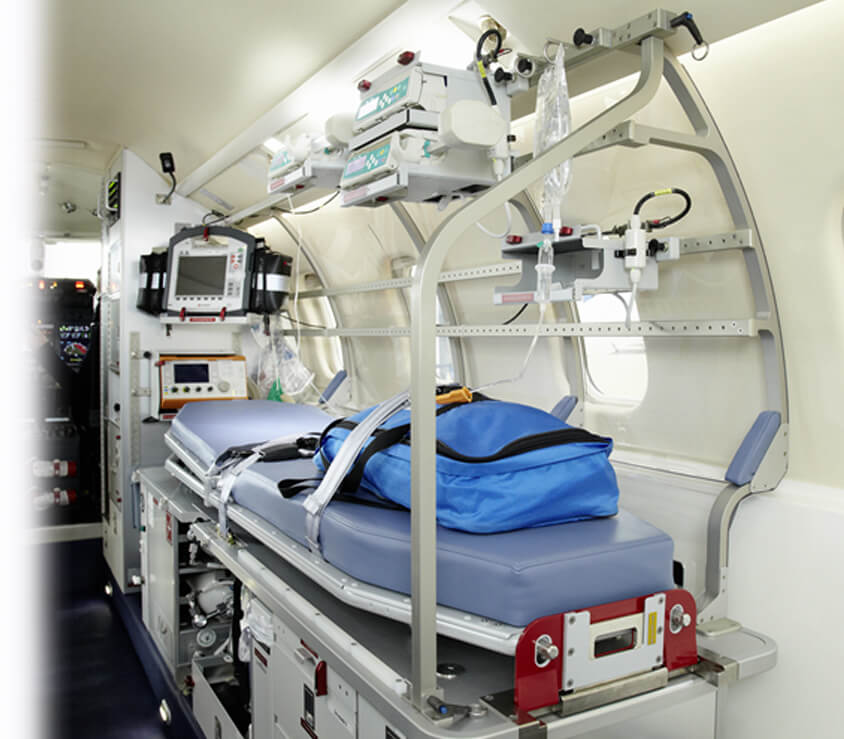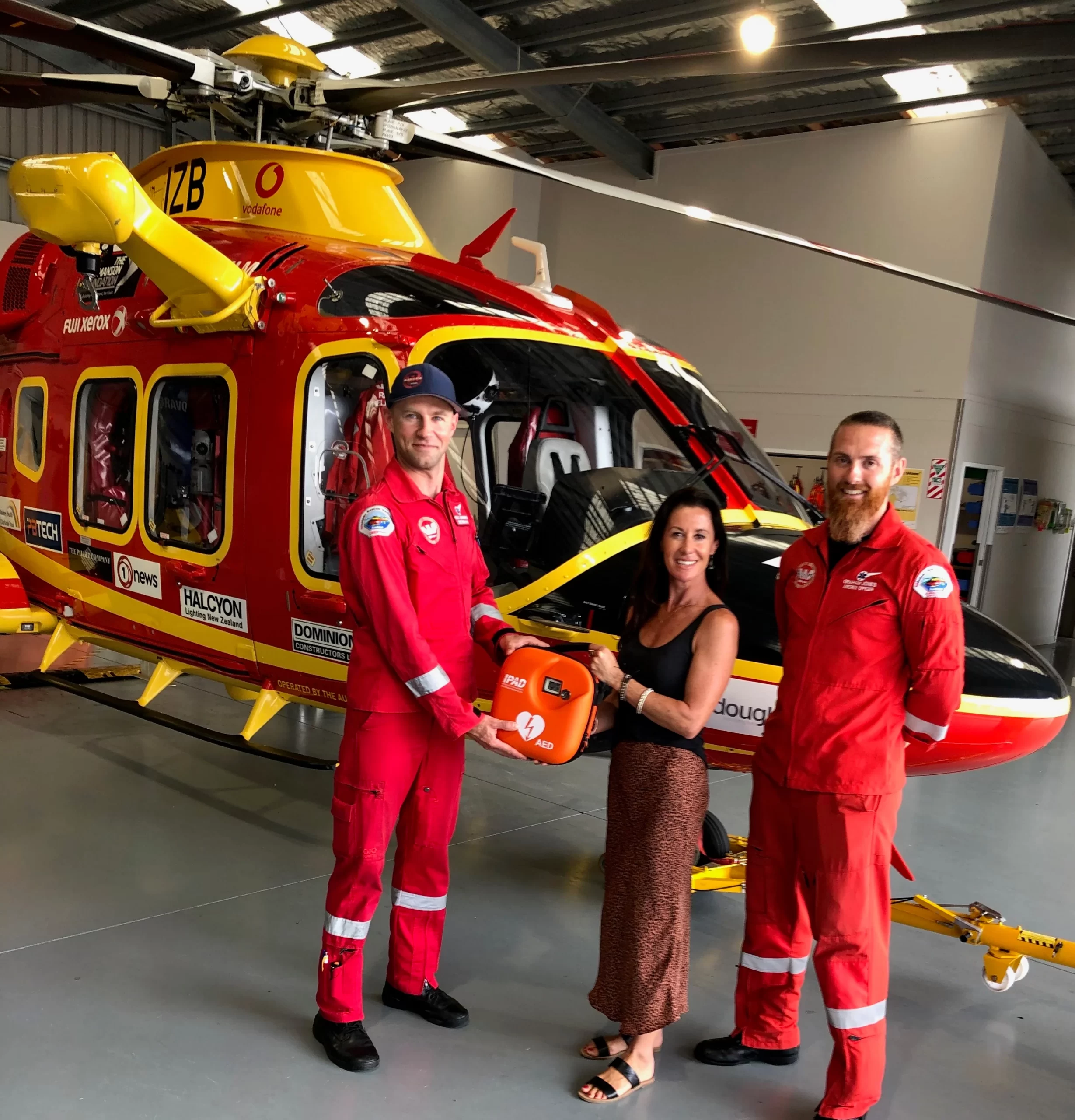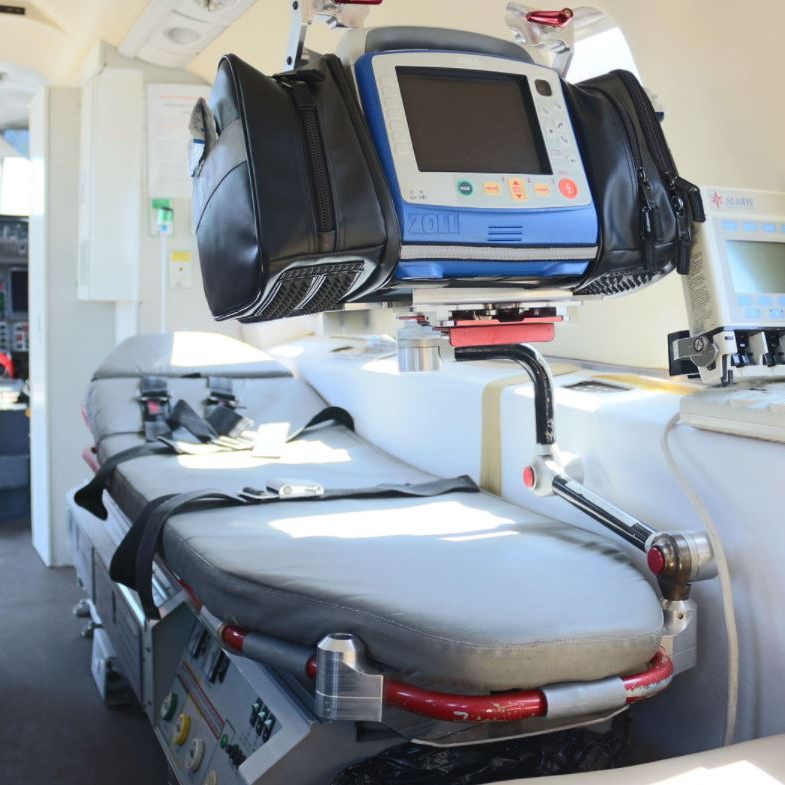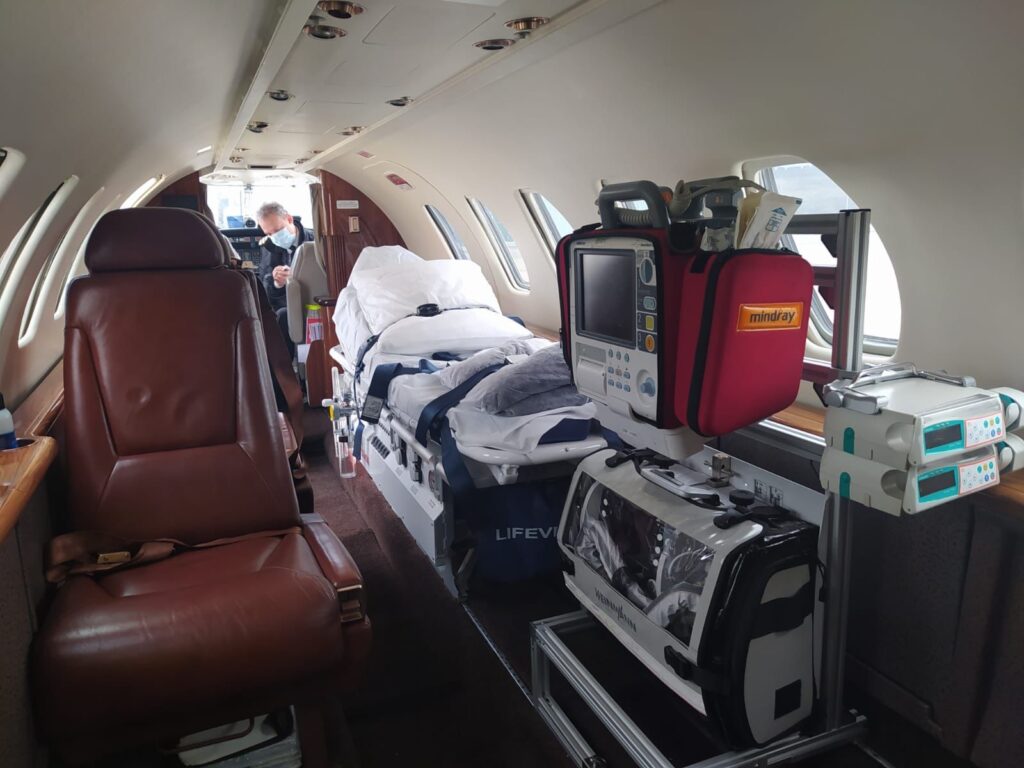Today, we’re going to take a close look at something that is quite fascinating – the high-tech gear found on air ambulances. You might have seen these incredible machines in movies or on the news, but have you ever wondered about the cutting-edge equipment they carry? From state-of-the-art medical devices to advanced navigation systems, air ambulances are equipped with the latest technology to ensure the best possible care for patients in critical condition. So, buckle up and get ready for a thrilling dive into the world of high-tech gear on air ambulances!

Advanced Communication Systems
Communication is a crucial aspect of any emergency situation, and air ambulances are no exception. When it comes to ensuring effective communication, advanced systems are a game-changer. One such system commonly utilized in air ambulances is satellite communication. These systems use satellites orbiting the Earth to establish stable and reliable communication channels between the crew on board the aircraft and the ground control team. This allows for seamless communication, even in remote or challenging geographical locations. With satellite communication systems, air ambulance crews can relay vital information, request additional resources, and receive guidance throughout the mission, ensuring optimal patient care.
Another essential communication tool found on air ambulances is two-way radios. These devices enable direct communication between the crew members within the aircraft and with individuals on the ground. Two-way radios provide a reliable and immediate means of communication, allowing the crew to coordinate activities, share critical information, and receive real-time updates. By utilizing two-way radios, air ambulance crews can maintain constant communication and ensure everyone is on the same page, promoting efficiency and safety during missions.
In addition to satellite communication and two-way radios, air ambulances are equipped with mobile data terminals. These terminals serve as a vital link between the medical crew inside the aircraft and medical facilities on the ground. Mobile data terminals are used to transmit patient data, such as vital signs, medical history, and other relevant information, to hospitals or medical centers. This allows healthcare professionals on the ground to prepare for the incoming patient and ensure they receive the appropriate care upon arrival. Mobile data terminals greatly enhance the coordination between the air ambulance and the receiving medical facility, resulting in better patient outcomes.
Medical Equipment
Air ambulances are fully equipped with a range of advanced medical equipment to provide critical care during transport. These high-tech devices can make a significant difference in saving lives and stabilizing patients in critical condition. Let’s take a closer look at some of the medical equipment commonly found on air ambulances.
Life support systems are the backbone of any air ambulance. These systems help sustain life by providing respiratory support, monitoring vital signs, and administering medication if needed. Life support systems on air ambulances are designed to be portable, lightweight, and user-friendly, ensuring that healthcare providers can deliver the necessary care under challenging conditions. With these systems in place, air ambulance crews can intervene promptly and effectively during emergencies.
Defibrillators are another crucial piece of equipment on air ambulances. These devices are used to restore normal heart rhythms by delivering controlled electric shocks to the heart. In cases of cardiac arrest or life-threatening arrhythmias, defibrillators play a critical role in resuscitation efforts, providing the patient with the best chance of survival. With defibrillators readily available on board, air ambulance crews can initiate life-saving interventions during transit to the closest appropriate medical facility.
Ventilators are essential for patients who require respiratory support. On air ambulances, ventilators ensure that patients with compromised breathing receive the necessary oxygen and maintain adequate ventilation throughout the journey. These sophisticated devices can be adapted to various patient needs, delivering different levels of support based on the individual’s condition. Ventilators on air ambulances are designed to be portable, durable, and equipped with advanced features to optimize patient care during transport.
Another valuable medical tool found on air ambulances is portable ultrasound machines. These devices allow healthcare providers to perform quick, non-invasive diagnostic assessments during the flight. Ultrasounds can be used to evaluate organ function, detect internal bleeding, or assess the viability of pregnancies. Having access to portable ultrasound machines ensures that critical information can be obtained promptly, aiding in the diagnosis and management of the patient’s condition.

Navigation and Flight Control
Accurate navigation and precise flight control are vital for air ambulances to reach their destinations safely and efficiently. The following advanced systems help ensure smooth operations during air medical missions.
GPS systems, widely known and used in various domains, are a key component of air ambulance navigation. These systems rely on a network of satellites to provide accurate positioning, ensuring that the aircraft is aware of its current location at all times. GPS systems also offer real-time information on altitude, ground speed, and course deviation, allowing for optimal flight planning and route adjustments if necessary. With GPS systems on board, air ambulances can navigate through challenging terrain, adverse weather conditions, and unfamiliar areas with confidence and reliability.
Terrain Awareness and Warning Systems (TAWS) are specifically designed to enhance flight safety, particularly during low-altitude operations. These systems compile data from various sources, including GPS, radar, and terrain databases, to provide the flight crew with detailed terrain mapping and alerting functions. TAWS help prevent accidents caused by unintentional encounters with terrain, obstacles, or hazardous conditions, providing early warnings and guidance to the crew. By incorporating TAWS into air ambulances, operators can mitigate potential risks associated with terrain and improve overall safety during missions.
Autopilot systems play a crucial role in reducing pilot workload and ensuring aircraft stability during air medical missions. These advanced systems are designed to automatically control the aircraft’s flight parameters, such as altitude, heading, and speed, based on the pilot’s inputs and predefined settings. Autopilot systems not only enhance flight control but also allow the flight crew to focus on critical tasks, such as patient care and communication with medical teams. By relieving the pilot of certain flight control responsibilities, autopilot systems contribute to smoother, safer flights, even in challenging conditions.
Weather Monitoring Tools
Weather conditions can have a significant impact on air ambulance operations, making it crucial to have reliable weather monitoring tools on board. The following high-tech equipment enables air ambulance crews to stay updated on weather patterns and make informed decisions during their missions.
Weather radar systems are essential for detecting and tracking precipitation, including rain, snow, and hail, within a certain range around the aircraft. These systems provide real-time information on the intensity, location, and movement of weather systems, allowing pilots to avoid hazardous conditions and plan alternative routes if needed. With weather radar on board, air ambulances can proactively navigate around adverse weather, ensuring the safety of the crew, patients, and medical teams on board.
Infrared cameras, also known as thermal imaging cameras, are utilized in air ambulances for their ability to monitor temperature patterns. These cameras detect the radiation emitted by objects and convert it into thermal images, enabling users to visualize temperature differences within the field of view. In medical air evacuation scenarios, infrared cameras can be used to identify hotspots or sources of heat, such as fires or overheating equipment. By detecting and reacting to potential heat sources, air ambulance crews can further enhance safety and prevent further complications during transport.
Night Vision Technology
Operating in low-light or complete darkness is a reality for air ambulances, especially during nighttime missions or in dimly lit areas. Night vision technology provides enhanced visibility and allows crews to carry out their tasks effectively. Let’s delve into the two main types of night vision technology commonly employed by air ambulances.
Night vision goggles (NVGs) are indispensable tools for air ambulance missions conducted in low-light conditions. These goggles amplify the available light, allowing the wearer to see clearly in the dark. NVGs enhance depth perception and improve overall situational awareness, enabling crews to navigate and perform critical tasks with greater ease. By providing clear vision in low-light environments, NVGs play a significant role in ensuring safe flights and efficient patient care during nighttime missions.
Forward-Looking Infrared (FLIR) systems provide another valuable tool for air ambulances in low-visibility scenarios. These systems use infrared technology to detect and display thermal radiation emitted by objects and the environment. By converting this radiation into images, FLIR systems produce a clear picture of the surroundings, even in complete darkness. FLIR technology allows air ambulance crews to identify potential obstacles, locate landing zones, and assess the general environment, contributing to safe and precise operations during nighttime missions.
Airborne Power Supply
To ensure continuous operation and support essential onboard systems, air ambulances are equipped with advanced power supply systems. Let’s explore two key components that keep the aircraft running smoothly.
Electric generators are vital for providing electrical power to various onboard systems and equipment. These generators, which can be powered directly by the aircraft’s engine or through auxiliary power units (APUs), supply the necessary electricity required for lighting, medical devices, communication systems, and other essential equipment. Electric generators on air ambulances are designed to be reliable, efficient, and capable of meeting the demanding power requirements of critical care missions.
Auxiliary Power Units (APUs) serve as secondary power sources, independent of the aircraft’s main engines, providing electrical power and other functions when needed. These units are typically located within the aircraft, often in the tail section or an external compartment. APUs are designed to supply electricity, hydraulic pressure, and compressed air for various systems, such as lighting, ventilation, climate control, and emergency functions. With APUs on board, air ambulances can operate autonomously, even on the ground or during engine shutdowns, ensuring uninterrupted power supply and critical system functionality.
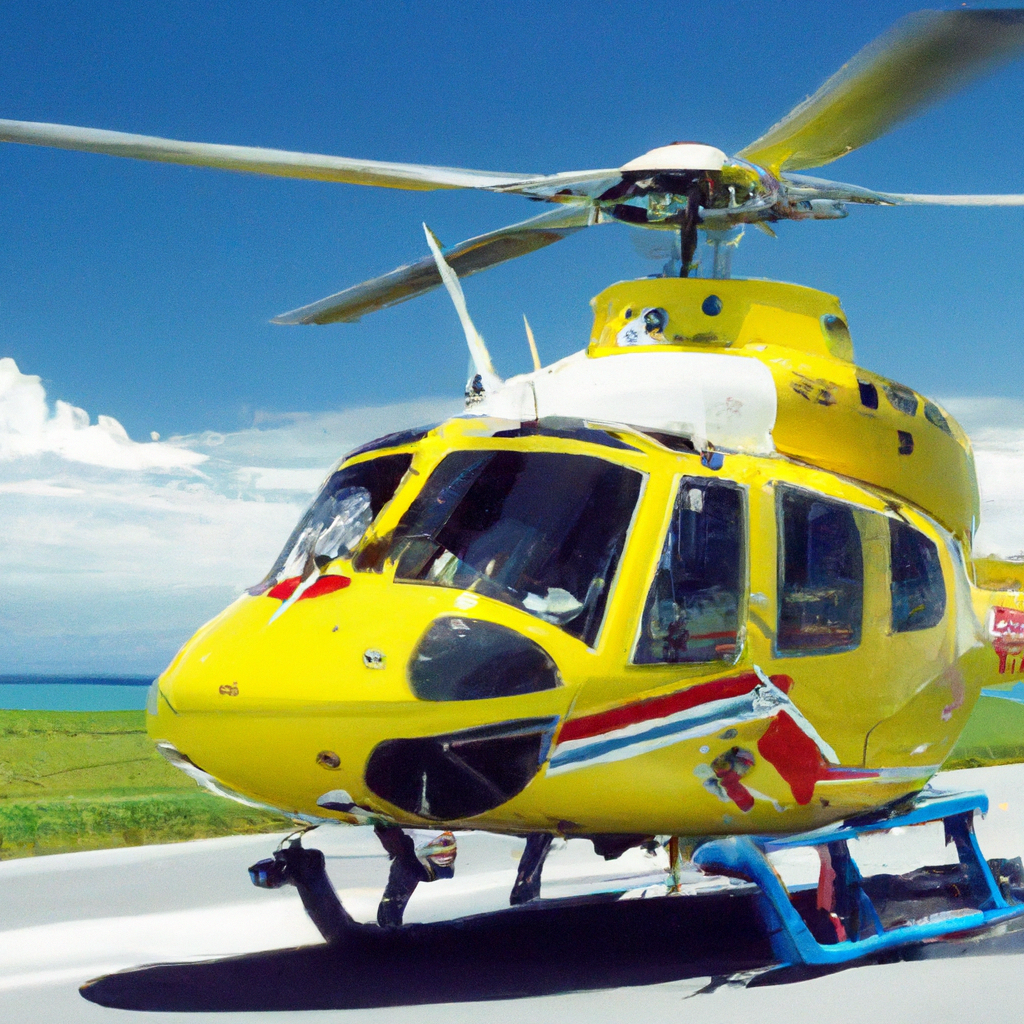
Cabin Design and Safety Features
The cabin of an air ambulance plays a crucial role in maintaining safety and providing the necessary environment for medical care during transportation. Here are some key design features and safety elements found in air ambulance cabins.
Crash-resistant seats are specifically designed to protect the occupants during accidents or sudden impact events. These seats are engineered to absorb energy and distribute forces, reducing the risk of injuries and enhancing the survival chances of crew members and patients on board. With reinforced structures, energy-absorbing materials, and adjustable features, crash-resistant seats provide an added layer of safety, ensuring that individuals in the cabin are protected even in the event of a crash or hard landing.
Emergency lighting systems are crucial for illuminating the cabin during emergencies or low-light situations. These systems ensure that the interior of the aircraft remains visible and easily navigable, allowing the crew to perform their tasks efficiently and safely. Emergency lighting typically consists of a combination of main cabin lights, floor proximity lights, and signage, all designed to facilitate rapid evacuation and emergency procedures. By providing adequate lighting in critical situations, air ambulances can maintain a controlled and safe environment during high-stress incidents.
Secure storage compartments are essential to ensure the safety and integrity of medical equipment, supplies, and personal belongings during air ambulance missions. These compartments are designed to securely store various items, such as medications, medical devices, oxygen cylinders, and personal effects of the crew and patients. By providing dedicated storage space, air ambulances can minimize the risk of equipment damage, ensure easy access to critical supplies, and maintain a clutter-free cabin environment.
External Rescue Equipment
In situations where air ambulance crews need to perform rescue operations or retrieve patients from challenging environments, external rescue equipment becomes invaluable. Let’s explore two essential pieces of equipment designed for external rescue operations.
Hoists and winches are commonly used to lift and lower personnel, patients, and equipment from the aircraft to the ground or vice versa. These systems, typically installed on the air ambulance’s exterior structure, provide a means for controlled vertical movement, enabling safe and efficient operations in various rescue scenarios. Hoists and winches are equipped with strong cables or ropes, capable of withstanding heavy loads, ensuring the secure transport of individuals or equipment during complex missions.
Rescue baskets, also known as Stokes baskets, are specially designed stretchers used to transport patients in challenging or hard-to-reach locations. These baskets offer a secure platform to safely immobilize and carry patients during rescue operations. Equipped with supporting straps and padding, rescue baskets ensure the patient’s stability and comfort during transportation. With the ability to be attached to hoists or winches, rescue baskets provide a reliable method of safely evacuating individuals from remote or inaccessible areas.
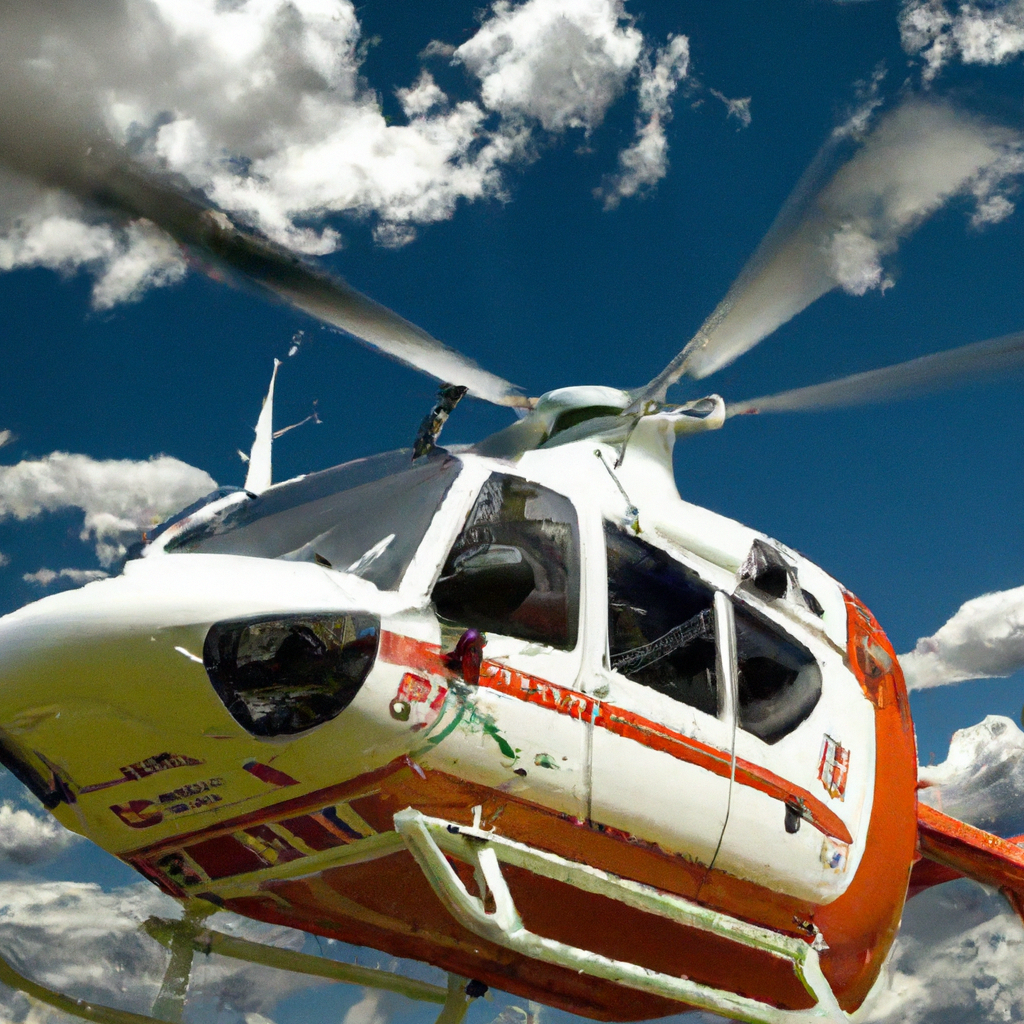
Tracking and Monitoring Systems
Tracking and monitoring systems play a vital role in keeping air ambulances visible and accountable during their missions. The following advanced systems provide real-time information and enhance the overall safety of air medical operations.
Automatic Flight Following (AFF) systems utilize GPS technology to track and monitor the position, speed, and altitude of the air ambulance in real-time. These systems automatically collect and transmit flight data to ground-based operations centers, enabling efficient flight coordination, monitoring, and overall situational awareness. AFF systems provide invaluable information to air traffic controllers, dispatchers, and ground personnel, allowing them to track the aircraft’s progress and respond promptly to any unforeseen circumstances or emergencies.
Real-Time Tracking systems take the monitoring capabilities of air ambulances a step further. These systems not only provide continuous position updates but also incorporate additional features such as telemetry data, fuel consumption, and maintenance-related information. Real-time tracking systems offer advanced analytics and reporting capabilities, enabling operators to optimize their fleet’s performance and identify areas for improvement. By having access to comprehensive and up-to-date data, air ambulance providers can enhance operational efficiency, reduce costs, and ensure the highest level of patient care.
Advanced Medical Records Systems
Efficient and secure management of patient information is critical for air ambulance operations. Advanced medical records systems provide a comprehensive solution for maintaining and accessing vital medical data during transport. Let’s explore two key components of these systems.
Electronic Health Records (EHRs) are digital versions of a patient’s medical history, including diagnoses, medications, laboratory results, and treatment plans. These records can be accessed securely by authorized healthcare professionals, ensuring the continuity of care during air ambulance missions. EHRs allow medical teams on board to have timely access to critical patient information, enabling them to make informed decisions and tailor the treatment to the individual’s needs. By utilizing EHRs, air ambulance crews can provide seamless care, even in situations where comprehensive medical records may not be readily available.
Telemedicine Systems integrate communication technology with medical expertise, allowing healthcare providers in the air ambulance to consult and collaborate with specialists on the ground in real-time. Through audio, video, and data exchange, telemedicine systems enable remote consultations, second opinions, and even guidance in performing certain procedures. These systems enhance the capabilities of air ambulance crews by providing them with access to specialized medical knowledge and support, regardless of their geographical location. By leveraging telemedicine systems, air ambulances can deliver high-quality care and bridge the gap between in-flight medical interventions and comprehensive medical resources.
In conclusion, air ambulances are equipped with an array of high-tech gear designed to enhance safety, improve communication, provide lifesaving medical support, and navigate challenging situations. From advanced communication systems to cutting-edge medical equipment, these technologies are the essence of a highly efficient and effective air medical service. By harnessing the power of innovation and integrating these advancements into their operations, air ambulance providers can ensure the best possible care for patients in critical situations.
